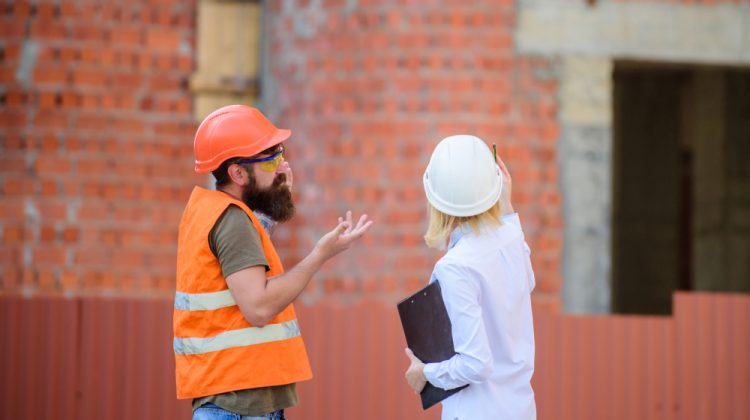
Stakeholder Management in Construction Projects
The Importance of Stakeholder Management in Construction Projects
Effective stakeholder management is crucial to the success of any construction project. Stakeholders—such as clients, contractors, suppliers, regulatory bodies, and the community—play an essential role in shaping project outcomes. Ensuring smooth communication, managing expectations, and addressing concerns helps avoid project delays, budget overruns, and conflicts.
Who Are the Stakeholders in Construction?
Stakeholders in construction projects include individuals or organizations that have a vested interest in the outcome of the project. They can be categorized into:
- Internal Stakeholders: These include the project owner, project manager, construction team, and employees.
- External Stakeholders: These encompass clients, investors, government authorities, suppliers, and the surrounding community.
Each of these groups has different expectations, responsibilities, and impacts on the construction process.
Why is Stakeholder Management Important?
1. Aligning Project Goals
Managing stakeholders ensures that the project goals are clearly understood and aligned across all parties. Early and transparent communication with stakeholders helps clarify objectives, deliverables, and expectations. This alignment minimizes misunderstandings, allowing the project to move forward smoothly.
Without stakeholder management, conflicting priorities can arise, leading to disruptions and changes in project scope.
2. Enhancing Communication and Collaboration
Successful stakeholder management fosters open communication between the project team and external parties. Regular updates and collaboration between stakeholders ensure that everyone is on the same page and aware of the project’s progress.
When communication channels are clear, stakeholders can address issues before they escalate. This results in more collaborative problem-solving, better decision-making, and a more cohesive approach to the project.
3. Managing Expectations
Stakeholders often have different expectations from a construction project. Clients may prioritize aesthetics, while contractors focus on meeting deadlines, and regulatory bodies emphasize safety and compliance. Effective stakeholder management allows for the balancing of these varying expectations to avoid conflicts.
For instance, if a stakeholder expects a project to be completed earlier than planned, the project manager can address this early by either managing that expectation or making the necessary adjustments.

4. Mitigating Risks
Construction projects come with inherent risks, including delays, cost overruns, and regulatory issues. Engaging stakeholders early and maintaining consistent communication helps identify potential risks and devise mitigation strategies.
Stakeholders, especially those with local or industry knowledge, can provide valuable insights into regulatory requirements, market trends, and external conditions that may impact the project. Addressing these risks early improves the chances of project success.
5. Building Trust and Support
Trust is essential for project success, especially in construction, where large investments and timelines are involved. Building relationships with stakeholders through transparency and active involvement fosters trust, making it easier to gain support for the project.
Engaged stakeholders are more likely to collaborate, support decisions, and advocate for the project when needed, whether it be securing permits or managing community relations.
Key Steps for Effective Stakeholder Management
1. Identify Key Stakeholders
Before the project begins, it’s essential to identify all relevant stakeholders. This includes both internal and external parties who will impact or be impacted by the project. Understanding their roles, interests, and influence on the project is critical to forming an effective stakeholder engagement plan.
2. Establish Clear Communication Channels
Open and consistent communication is at the heart of stakeholder management. Project managers should establish clear communication channels that keep stakeholders informed at every stage. This could be through regular meetings, progress reports, or updates via email or project management software.
3. Manage Conflicts Proactively
Conflicts between stakeholders can arise due to differing priorities, miscommunication, or unforeseen changes in the project. Proactive conflict management, through early identification and mediation, can prevent disputes from disrupting the project. Listening to stakeholders’ concerns and addressing them fairly is crucial in maintaining harmony.
4. Involve Stakeholders in Decision-Making
Stakeholders who feel included in the decision-making process are more likely to support the project’s direction. Project managers should engage stakeholders when making critical decisions that affect the project’s scope, budget, or timeline. Their input can lead to better-informed choices and ensure that all concerns are taken into account.
5. Monitor and Review Stakeholder Engagement
As the project progresses, it’s important to continually monitor stakeholder engagement to ensure it remains effective. Periodically reviewing communication plans and engagement strategies helps project managers adapt to changes in stakeholder priorities or project circumstances.
Conclusion
Stakeholder management in construction projects is vital for achieving project goals, maintaining budget and timelines, and ensuring stakeholder satisfaction. By fostering open communication, aligning expectations, and building trust, project managers can mitigate risks, resolve conflicts, and create a collaborative environment that drives project success..
For more information on managing stakeholder relationships in construction, contact us.
External Links:
- Learn more about stakeholder management principles at Project Management Institute.
- Discover best practices in communication for construction projects at Construction Executive.
Read more related articles to enhance your knowledge and make informed decisions
10 Essential Steps in the Building Construction Process
How to Choose the Right Materials for Your Construction Project








